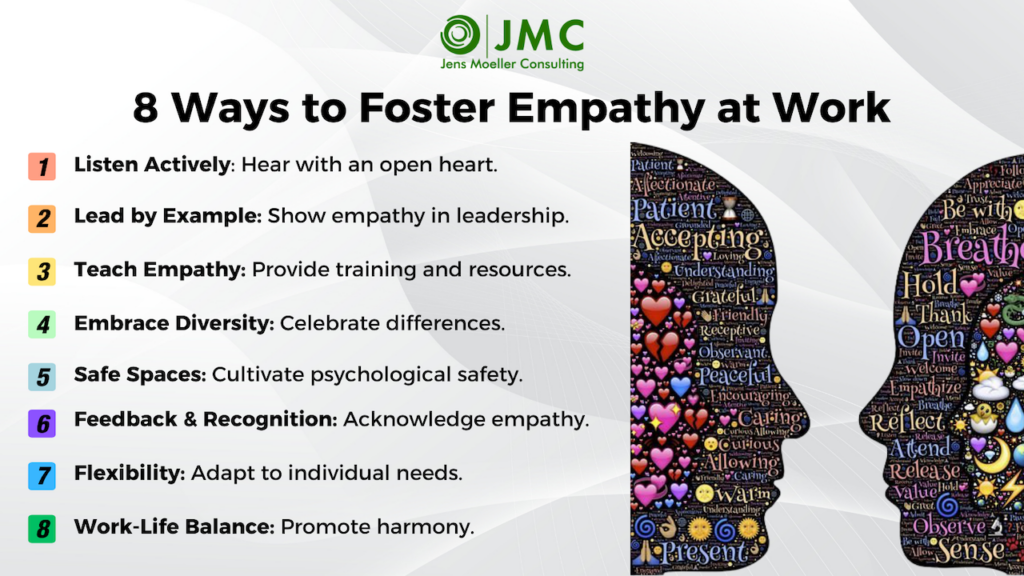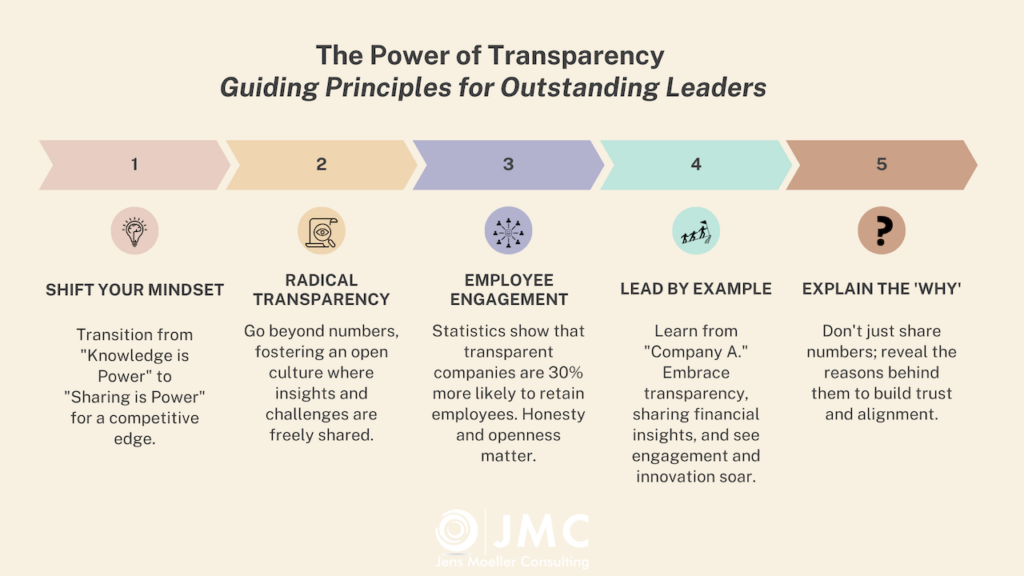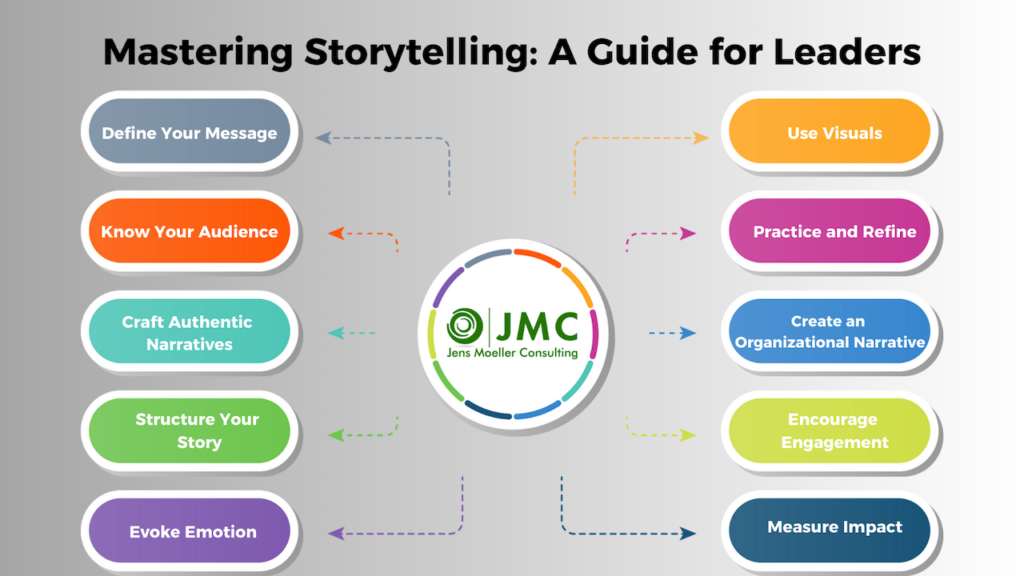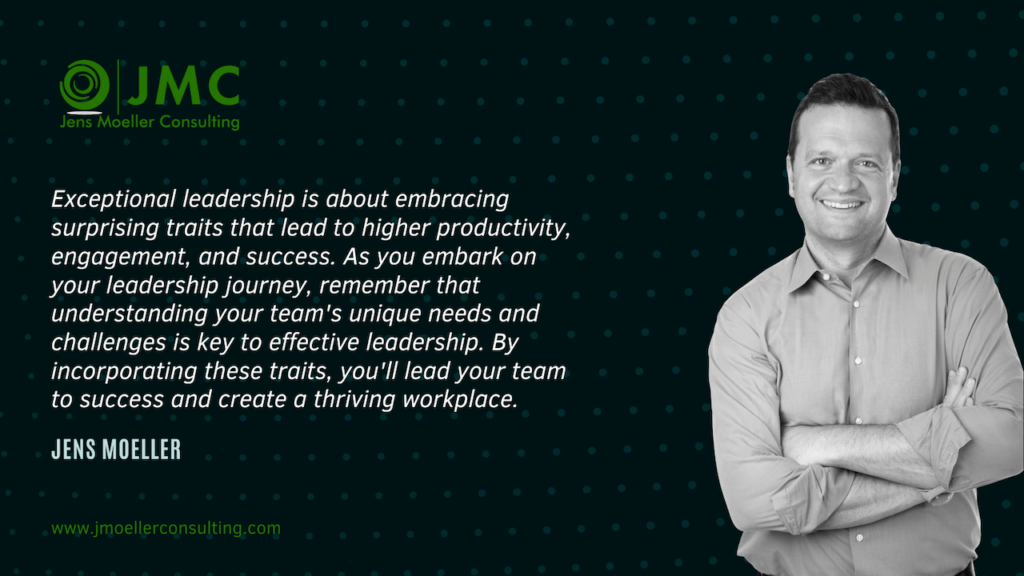In our relentless pursuit of excellence, we’ve harnessed the wealth of wisdom derived from the expertise of Jens Moeller, Founder of JMC Consulting. Jens brings to the table an impressive 27 years of hands-on project experience, during which he’s served as a troubleshooter for over 90 clients, successfully spearheading more than 100 transformative projects. With a unique blend of consulting, coaching, and authorship, Jens has become a veteran of numerous sectors, making him an invaluable source of insights into the art of effective leadership. His approach involves seamlessly integrating into his client’s operations, scrutinizing the inner workings, and identifying areas that require improvement. Jens Moeller’s unique perspective, as an independent eye, offers fresh insights that lead to fundamentaland lasting transformation.
Jens Moeller, with his deep-rooted expertise, is more than just a consultant. He has spent six years in the trenches, gaining invaluable experience at one of Europe’s largest Call Centre Outsourcing & BPO companies, giving him an intimate understanding of the intricacies of business operations. Over the years, he has forged partnerships and worked with a diverse range of clients, including local government bodies, top 10 consultancies, boutique consultancies, large professional services firms, and capital investors. With Jens Moeller as our guide, we’ve distilled the wisdom of effective leadership into these 10 surprising traits.
Leading with Empathy: The Heart of Successful Leadership
In the realm of effective leadership, one trait stands out as paramount: empathy. Successful leaders understand that fostering genuine care and compassion for their team members is a cornerstone of creating a thriving work environment. It’s a form of love known as agape or companionate love, which, while lacking the passionate aspect, is abundant in warmth, connection, and understanding.
Why is empathy such a game-changer in leadership? The statistics speak for themselves. Research consistently shows that leaders who demonstrate care for their team members not only experience higher levels of employee engagement but also reap the rewards of better business outcomes.
Consider this: A study found that companies with empathetic leaders have employees who are 50% more productive. Empathetic leaders create a culture of trust, support, and psychological safety that encourages employees to bring their best selves to work every day. This, in turn, leads to increased productivity, creativity, and a stronger sense of belonging.
Take the case of ‘Company XYZ,’ where the leadership team actively promoted a culture of empathy. Employees at ‘Company XYZ’ reported significantly higher job satisfaction and were more likely to stay with the company for the long term. The leadership’s empathetic approach led to a stronger sense of unity and collaboration among team members, resulting in innovative solutions and improved business performance.
In the words of the legendary basketball coach John Wooden, “I will not like you all the same, but I will love you all the same.” This sentiment encapsulates the essence of leading with empathy. It’s about recognizing and embracing the individuality of team members, valuing their unique contributions, and providing the support and care they need to thrive.
In the competitive world of business, leading with empathy is not just a ‘soft’ skill; it’s a strategic advantage. Successful leaders understand that by cultivating a culture of empathy, they can tap into the full potential of their team and achieve exceptional results.

From Open Doors to Open Conversations
Effective leaders understand that traditional open door policies, once hailed as symbols of accessibility and communication, can, in fact, hinder deep work and strategic thinking. Research suggests that a significant number of employees are hesitant to approach open doors with problems or ideas due to the fear of potential repercussions. A better alternative, as proposed by Jens Moeller, lies in closing the physical door while opening the calendar to facilitate meaningful communication.
Statistics reveal that nearly 50% of employees are reluctant to approach leaders with ideas or issues when open door policies are in place. This hesitation can stifle innovation and problem-solving within an organization. To overcome this challenge, Jens Moeller recommends adopting a structured communication strategy that includes regular one-on-one meetings and designated ‘office hours.’
For instance, “Company X”, which initially embraced a traditional open door policy, saw a significant transformation when it implemented Jens Moeller’s approach. By scheduling one-on-one meetings and encouraging structured communication, “Company X” created an environment where ideas flowed freely, issues were addressed promptly, and employees felt more engaged.
By redefining the open door policy and embracing structured communication, effective leaders can overcome the barriers to innovation and create a workplace where ideas are heard, issues are resolved, and productivity soars.

Smartphones and Meetings: A Modern-Day Dilemma for Leaders
In a world driven by technology, the smartphone has become a ubiquitous companion, seldom leaving our side. However, when it comes to the domain of effective leadership, one principle stands firm: successful leaders leave their smartphones out of meetings.
Research consistently points to the negative impact of smartphones in meetings. Using these devices during crucial discussions can not only be perceived as rude but also unprofessional. Surprisingly, a significant percentage of people find activities such as reading or sending texts and emails during meetings highly inappropriate.
So, why the aversion to smartphone usage in meetings? The statistics are quite revealing. A study conducted by the University of Southern California’s Marshall School of Business found that 75% of those surveyed believed it was inappropriate to read or send texts or emails during meetings. Even more striking, 22% considered any form of smartphone usage in meetings as unprofessional.
Moreover, research titled “The Pen Is Mightier Than the Keyboard” has uncovered a significant revelation: when it comes to comprehension and memory, taking notes by hand far surpasses typing notes on a keyboard. To avoid distractions, remain mindful and present, and enhance recall, leaders are encouraged to leave their smartphones at their desks and resort to the age-old method of pen and notebooks for note-taking.
Take a moment to ponder this—how many times have you been in a meeting where you’ve witnessed colleagues immersed in their smartphones, only to be detached from the discussion at hand? The impact on productivity and the quality of the meeting is undeniable.
Now, consider the story of “Company Z,” where leadership instituted a strict ‘no smartphone’ policy during meetings. The transformation was remarkable. Meetings became more focused, and participants were fully engaged in the discussions. As a result, the quality of decision-making improved, and the retention of information soared.
By banning smartphones during meetings, “Company Z” not only elevated the quality of interactions but also enhanced the overall productivity and effectiveness of their discussions. They realized that, in the quest for effective leadership, the traditional approach of pen and paper triumphed over the allure of smartphones.
In the modern workplace, where digital distractions are abundant, embracing the art of leaving smartphones out of meetings is not a simple etiquette matter; it’s a strategic decision that paves the way for heightened focus, improved recall, and more impactful discussions. Effective leaders understand this and lead by example, ensuring that meetings remain a sanctuary of undivided attention and productive outcomes.
The Power of Transparency: An Essential Trait of Outstanding Leaders
In the ever-evolving landscape of leadership, one trait stands as a pillar of strength: transparency. Outstanding leaders understand the significance of transparency and how it can shape a thriving and innovative organization.
Traditionally, information flowed upward, and decisions trickled down through the hierarchical structure of organizations. However, to compete effectively in today’s fast-paced world, we must make a profound shift – from the belief that “knowledge is power” to a new paradigm where “sharing is power.”
Transparency involves more than just revealing the numbers; it’s about creating an open culture where insights, challenges, and successes are shared openly, without fear of repercussions. It means empowering employees at all levels with the information and knowledge they need to make informed decisions. This shift towards radical transparency can be transformative for organizations.
Consider the statistics: Companies that foster transparency are found to be 30% more likely to retain their employees. Employees value honesty and openness from leadership. They want to feel like they are part of a collective effort where their contributions are acknowledged and they have a voice in the decision-making process.
For example, take the case of “Company A.” In the past, it had a traditional approach where information was closely guarded at the top. This created a culture of secrecy, mistrust, and a lack of employee engagement. However, when Company A embraced transparency and started sharing all necessary financial information and insights, everything changed. The employees felt more engaged and empowered, leading to a significant boost in productivity and innovation.
Leaders who understand the power of transparency not only share the numbers but also the ‘why’ behind the numbers. They create an environment where employees feel trusted and included in the company’s journey. This results in higher job satisfaction, lower turnover rates, and increased alignment between employees and the organization’s goals.
In today’s world, where information flows freely and quickly, leaders who embrace transparency foster a culture of openness, trust, and accountability. They understand that the new currency of leadership is not just knowledge but the willingness to share it. In the next section, we’ll delve into the intriguing trait of leaders showing vulnerability, a crucial aspect of effective leadership.

The Art of Personalization: Why Exceptional Leaders Tailor Their Approach
In the intricate realm of leadership, one principle stands tall: exceptional leaders do not subscribe to a one-size-fits-all approach. While the desire to be impartial and fair is commendable, treating all team members identically can be fundamentally unfair and counterproductive.
The statistics underscore the importance of this nuanced approach. Research reveals that organizations with personalized leadership approaches are 40% more likely to deliver high-quality business results. It’s clear that acknowledging the individuality of team members can be a powerful catalyst for success.
Consider the case of “Company B”, where a traditional ‘one-size-fits-all’ leadership approach was firmly entrenched. This strategy led to issues with talent retention, employee satisfaction, and overall team performance. However, when the leadership decided to pivot and embrace a personalized approach, everything changed. They took the time to understand each team member’s unique attributes – their talents, experiences, attitudes, strengths, and goals. This approach allowed leaders to tailor their guidance based on merit and performance, leading to remarkable improvements in employee engagement, productivity, and overall company success.
Exceptional leaders understand that each team member brings a unique set of skills and aspirations to the table. By personalizing their leadership approach, they foster an environment where employees feel valued and recognized for their individual contributions. This not only boosts employee satisfaction but also drives motivation and job performance.
In the competitive landscape of today’s workplaces, exceptional leaders recognize the power of personalization. They understand that by acknowledging the unique attributes and aspirations of their team members, they can unlock the full potential of their workforce and drive exceptional results. In the next section, we’ll explore the concept of leaders revealing their vulnerability, a trait that strengthens bonds and builds trust among team members.
Leadership as Constant Influence: The Unwavering Responsibility
In the grand tapestry of leadership, one undeniable truth prevails: leadership is synonymous with influence. The actions, decisions, and even inaction of leaders cast ripples that touch everyone around them, whether they realize it or not. Leadership, therefore, is not a choice; it’s an inherent responsibility, one that carries profound implications for both personal and professional life.
The statistics reinforce this concept. A study found that leaders who exhibit positive influence are 40% more likely to have teams with high job satisfaction and engagement. The data speaks to the inextricable link between leadership and influence.
Consider this: The influence of leaders extends beyond boardrooms and meetings. It transcends into family life, friendships, and interactions with colleagues and peers. Leaders are constantly setting an example, whether consciously or unconsciously. This influence can shape the direction of a company, the dynamics of a team, or the atmosphere in a household.
In a world where actions speak louder than words, successful leaders understand that they are perpetually influencing those around them. They don’t treat leadership as a mere title but as a commitment to guide in a positive direction.
In the grand tradition of effective leadership, the message is clear: lead with intent. By being aware of their constant influence, leaders can make conscious choices to steer their impact in a positive direction. They understand that their actions, big or small, can set the tone for their family, colleagues, and peers, and they embrace this responsibility with dedication.

Prioritizing Respect Over Popularity: The Mark of Outstanding Leaders
In the intricate world of leadership, there’s a pivotal choice that separates the exceptional from the ordinary: the decision to prioritize respect over popularity. It’s a natural human inclination to seek approval and be liked, but exceptional leaders understand the profound distinction between being a friend and being a leader.
The data speaks volumes on this matter. A survey found that leaders who prioritize respect and effectiveness over popularity have teams that are 60% more productive and engaged. The numbers underscore the significance of this leadership trait.
Consider the scenario: The desire to be liked can lead managers to withhold necessary feedback, avoid making tough decisions, and endlessly seek universal agreement. While these actions may temporarily appease team members, they often lead to delayed decision-making, a lack of accountability, and a stagnation of growth.
In the journey of effective leadership, it’s crucial to recognize that your team doesn’t require another friend. They seek a leader who can coach and mentor them, advance their careers, and make the tough decisions when required. Exceptional leaders replace the need for universal approval with a commitment to leading effectively and with integrity.
Moreover, they understand that being loved by their family and close friends carries more weight than universal approval. This shift in perspective allows leaders to prioritize their responsibility over personal popularity and guides them to make choices that benefit the greater good.
In the modern landscape of leadership, respect isn’t earned by seeking universal approval. It’s gained through effective leadership, accountability, and the courage to make the right decisions. Exceptional leaders understand that respect, not popularity, is the currency of leadership, and they choose to prioritize it over the fleeting desire for approval.
The Power of Vulnerability: Building Trust Through Authentic Leadership
In the complex realm of leadership, a remarkable trait distinguishes the truly effective from the rest: the acknowledgment of vulnerability. Exceptional leaders understand that authenticity and vulnerability are potent tools for forging trust, credibility, and authentic connections within their teams.
The statistics affirm this concept. Studies consistently show that leaders who exhibit vulnerability and authenticity in their leadership style have teams that are 45% more likely to trust their leadership. The numbers highlight the profound impact of this quality.
Consider this scenario: The workplace is often seen as a battleground where leaders must project an air of confidence and invincibility. However, the best leaders today realize that authenticity and vulnerability are the fastest pathways to earning trust.
Research titled “The Effects of Leader and Follower Emotional Intelligence on Performance and Attitudes” supports this notion. The study found that leaders who exhibit emotional intelligence, which includes vulnerability and authenticity, have teams that are more engaged, productive, and satisfied.
For example, look at the journey of “Company C.” In the past, it had a leadership culture that placed a premium on an invulnerable facade. However, when the leadership decided to embrace vulnerability and authenticity, everything changed. Team members no longer saw their leaders as distant figures but as authentic individuals with relatable experiences and challenges. This newfound sense of connection and authenticity fostered a deeper bond of trust, leading to improved employee engagement and loyalty.
In the modern workplace, where employees value transparency and authenticity, exceptional leaders understand the importance of vulnerability. They share their challenges, admit their mistakes, and communicate their feelings openly. By doing so, they create an environment where team members feel comfortable doing the same. This authentic connection leads to stronger bonds and increased trust, and it ultimately drives better results for the organization.
The Art of Storytelling: A Powerful Tool for Exceptional Leaders
In the intricate world of leadership, one tool consistently separates the exceptional from the ordinary: the art of storytelling. Exceptional leaders recognize the transformative power of stories and their ability to captivate, inspire, and motivate their teams.
Research reinforces this notion. Studies have shown that leaders who use storytelling as a communication tool are 30% more likely to engage and influence their teams. The data speaks to the impact of this skill.
Consider this scenario: When leaders use storytelling, they turn abstract concepts into relatable experiences. They provide context and meaning to their organization’s values, mission, and goals. Instead of presenting dry data, they craft narratives that resonate with their team members on a personal level.
Storytelling can also serve as a bridge that connects the past, present, and future of the organization. It allows leaders to communicate the company’s history, current challenges, and future vision in a way that is both memorable and inspiring.
For example, “Company D“ harnessed the power of storytelling to create a compelling narrative around its journey. Instead of simply presenting quarterly results, the leadership began to tell stories about the challenges faced, the innovations developed, and the future they envisioned. This approach significantly increased employee engagement, as team members now felt connected to the larger narrative of the organization.
In the modern landscape of leadership, exceptional leaders recognize that storytelling is not just a communication tool; it’s a vehicle for creating a shared vision and fostering a sense of belonging. By mastering the art of storytelling, leaders engage their teams, inspire them to overcome challenges, and unite them in pursuit of a common goal.

From Decision-Maker to Decision-Crafter: The Role of Exceptional Leaders
In the dynamic world of leadership, one role stands out as essential: the transition from a decision-maker to a decision-crafter. Exceptional leaders understand that their role goes beyond choosing between options; they are architects of decisions, shaping them into meaningful actions and outcomes.
The statistics highlight the importance of this approach. Research indicates that organizations with leaders who craft decisions instead of just making them are 25% more likely to achieve their strategic goals. The numbers emphasize the transformative power of this leadership trait.
Consider this scenario: Traditional decision-making involves selecting the best option from available choices. In contrast, decision-crafting involves shaping the chosen option into a detailed plan, assigning responsibilities, and providing the resources needed for successful execution.
For example, “Company E” found a marked difference when the leadership transitioned from decision-making to decision-crafting. Instead of leaving decisions as abstract choices, they created detailed implementation plans, provided necessary support, and ensured clear communication. This approach led to better execution, fewer misunderstandings, and a higher likelihood of strategic success.
Exceptional leaders understand that decision-making is only half the battle. To achieve desired outcomes, they must craft decisions with precision and foresight, turning them into actionable steps that lead to success. In the next section, we’ll explore the concept of fostering a culture of growth, a crucial aspect of effective leadership.
The Growth Culture: A Cornerstone of Exceptional Leadership
In the ever-evolving landscape of leadership, one element stands out as the cornerstone of exceptional leadership: fostering a culture of growth. Outstanding leaders understand that embracing a growth mindset and creating an environment that supports continuous development are key to success.
The statistics reinforce this notion. Studies consistently show that organizations that foster a culture of growth have teams that are 47% more likely to be engaged and 34% more likely to deliver exceptional results. The data underscores the significance of this leadership trait.
Consider this scenario: A culture of growth is characterized by a commitment to learning, adaptability, and innovation. Leaders in such organizations encourage their teams to take risks, learn from failures, and constantly improve. They provide opportunities for skill development, mentorship, and personal growth.
For example, “Company F” underwent a remarkable transformation when it embraced a growth culture. The leadership encouraged employees to take on new challenges, supported their efforts to learn and grow, and celebrated their achievements. This approach resulted in a highly engaged and motivated workforce, as well as innovative solutions to long-standing problems.
Exceptional leaders understand that a growth culture not only benefits employees but also drives organizational success. By fostering an environment where learning and improvement are valued, they create teams that are agile, creative, and committed to achieving exceptional results.

Conclusion
Effective leadership is not a one-size-fits-all formula; it’s a dynamic process that requires an understanding of your team’s unique needs and challenges. Jens Moeller, the founder of JMC Consulting, has illuminated ten surprising traits that make leaders exceptional. From leading with empathy to embracing vulnerability, from the power of storytelling to fostering a culture of growth, these traits form the blueprint of leadership success in the modern world.
It’s clear that the data supports the significance of these traits, and successful organizations have reaped the rewards of embracing them. Companies have seen increased productivity, higher employee engagement, lower turnover rates, and improved business performance when they incorporate these traits into their leadership approach.
So, as you embark on your leadership journey, remember that effective leadership is a continuous learning experience. Take inspiration from the wisdom of Jens Moeller and incorporate these surprising traits into your leadership style. By doing so, you’ll not only lead your team to success but also create a workplace where individuals thrive and contribute their best.

Discover the Power of Exceptional Leadership with JMC Consulting
At JMC Consulting, we specialize in helping leaders and organizations achieve their full potential. Our founder, Jens Moeller, brings decades of experience and a unique perspective to the world of leadership and consulting. If you’re ready to unlock the full potential of your leadership or organization, we invite you to contact us today.
Our team at JMC Consulting is ready to guide you on your leadership journey, help you embrace these surprising traits, and foster a culture of growth and excellence. To explore how our services can benefit you and your organization, visit our website or reach out to us today.
BOOK A MEETING
 by Jens Moeller
by Jens Moeller